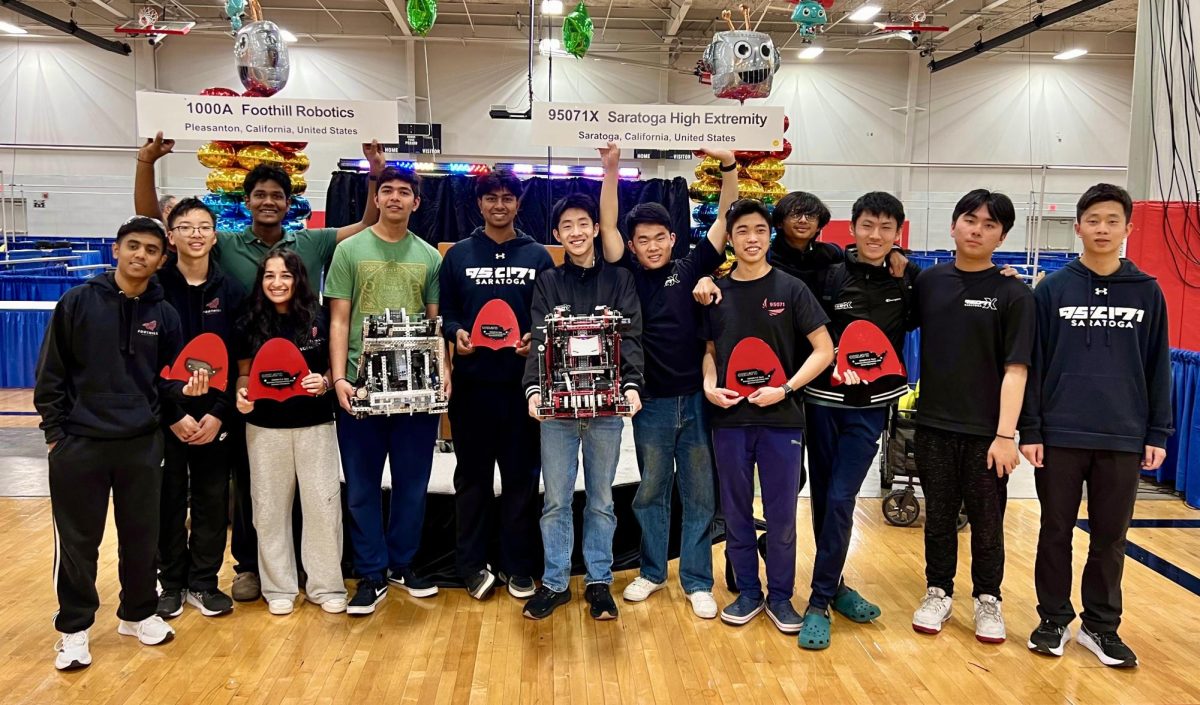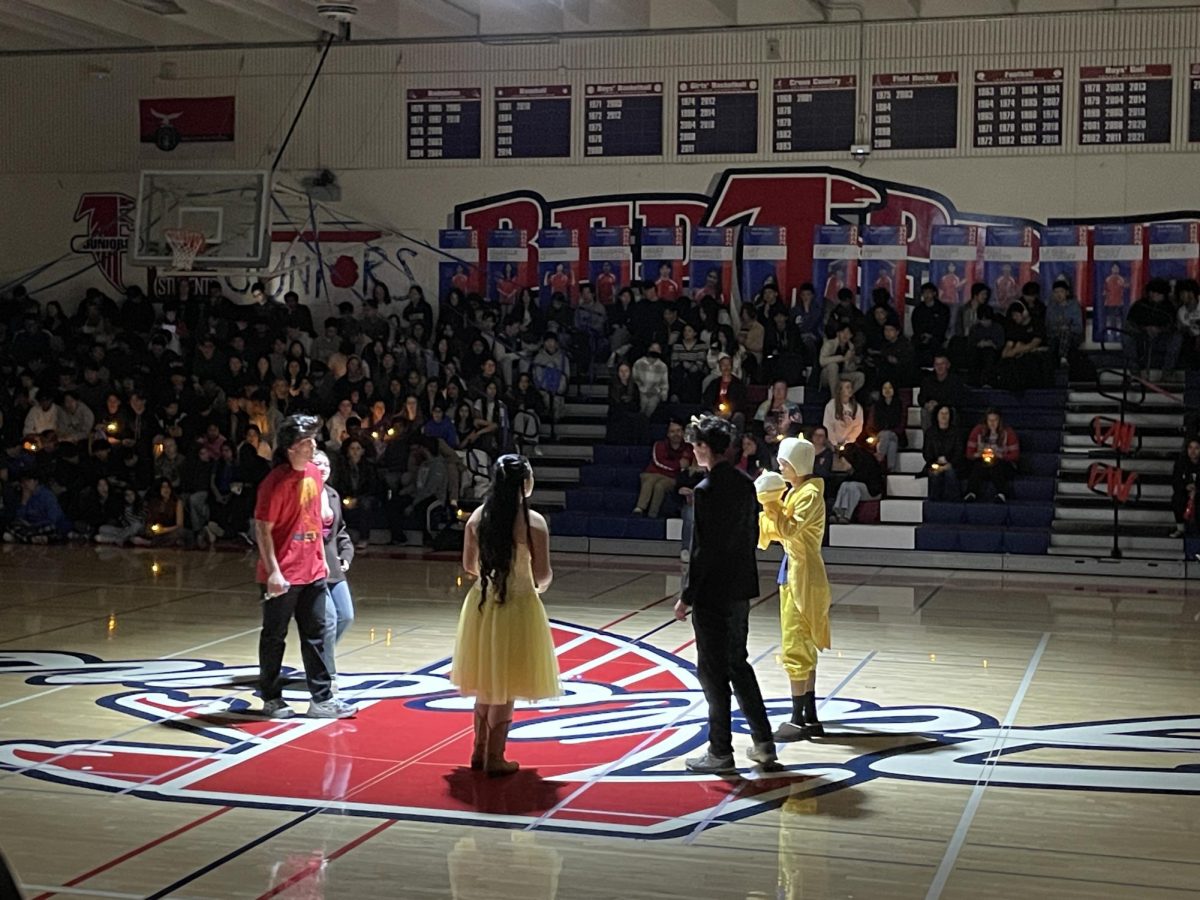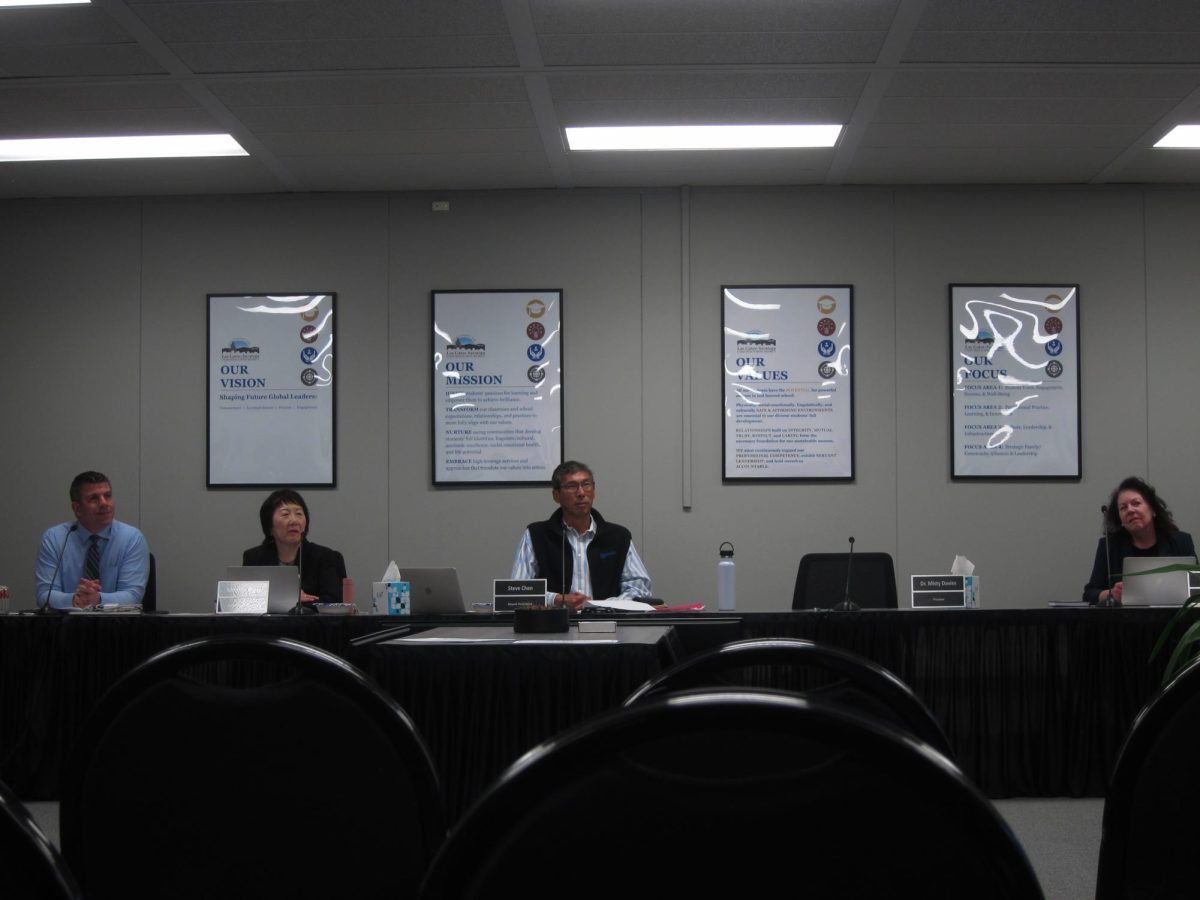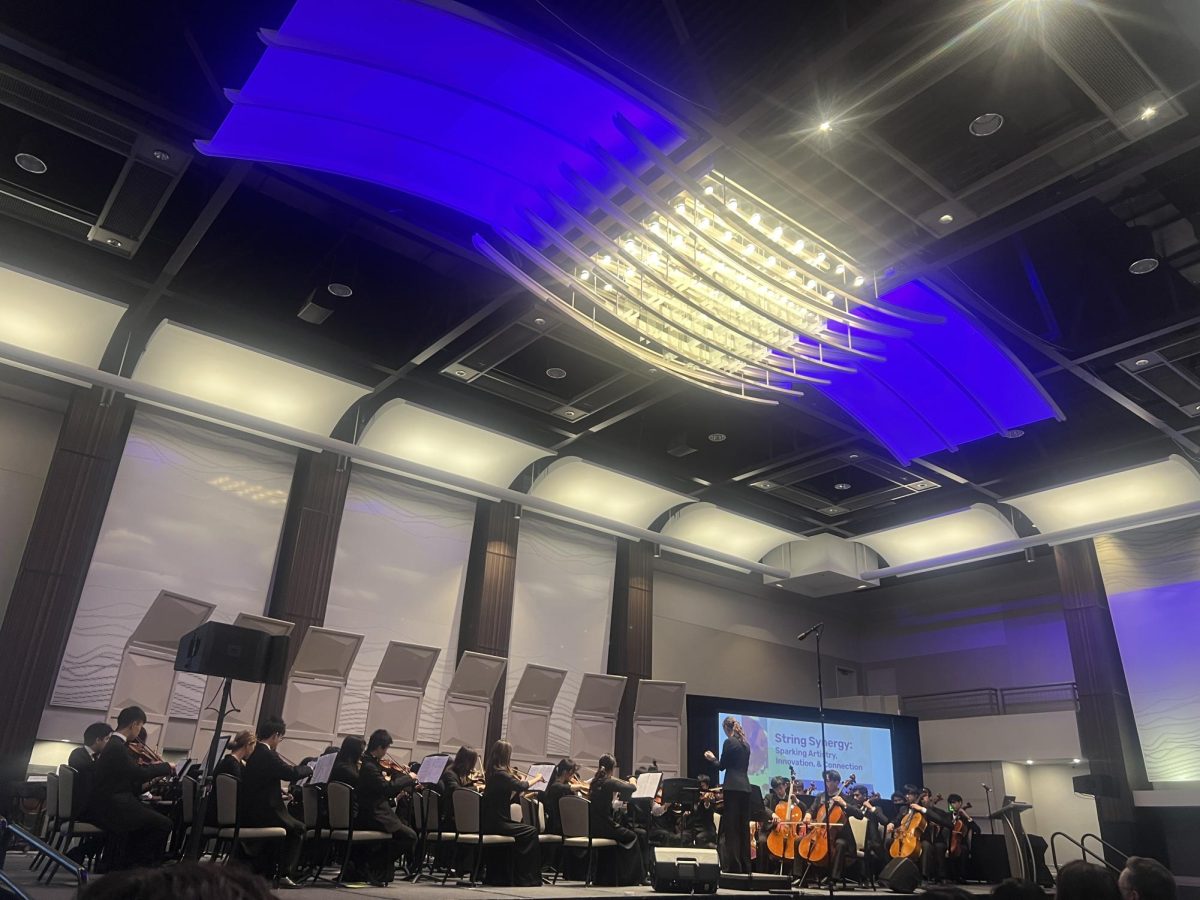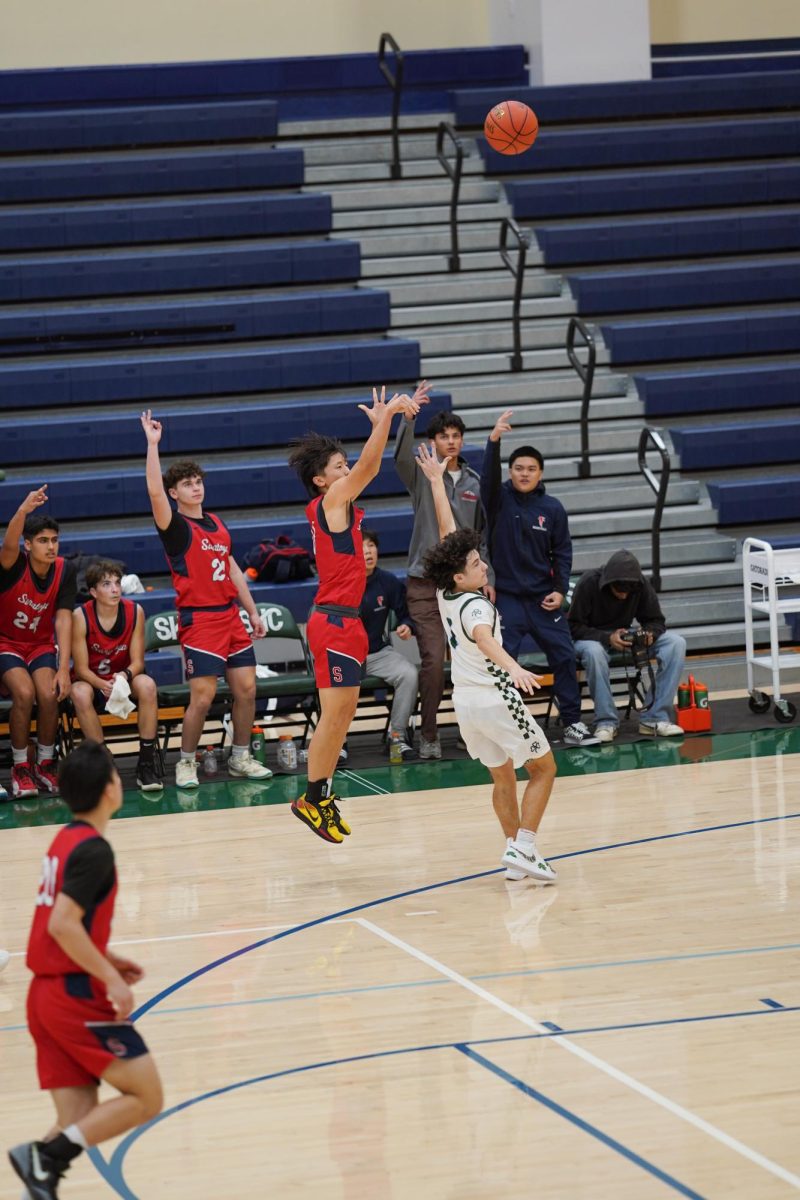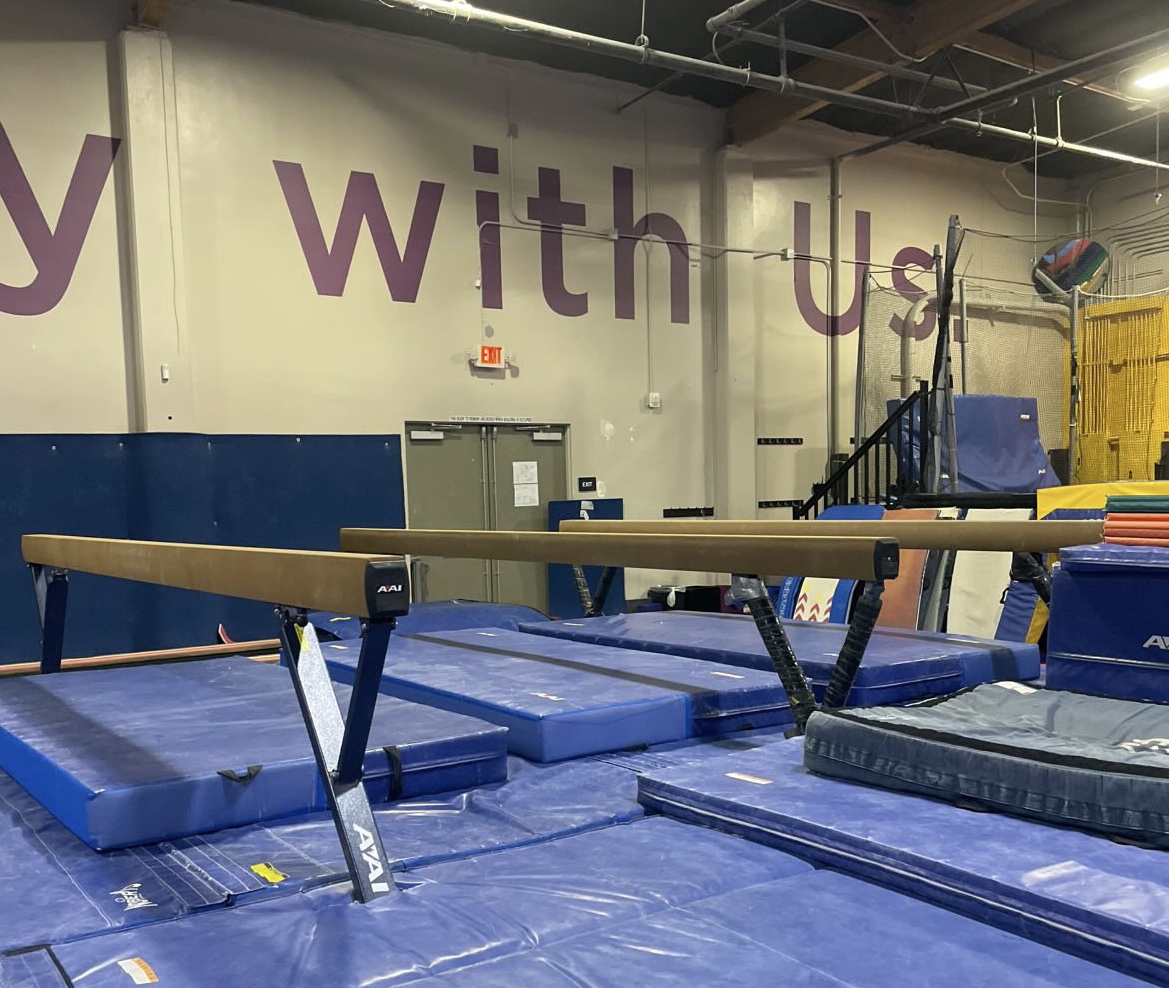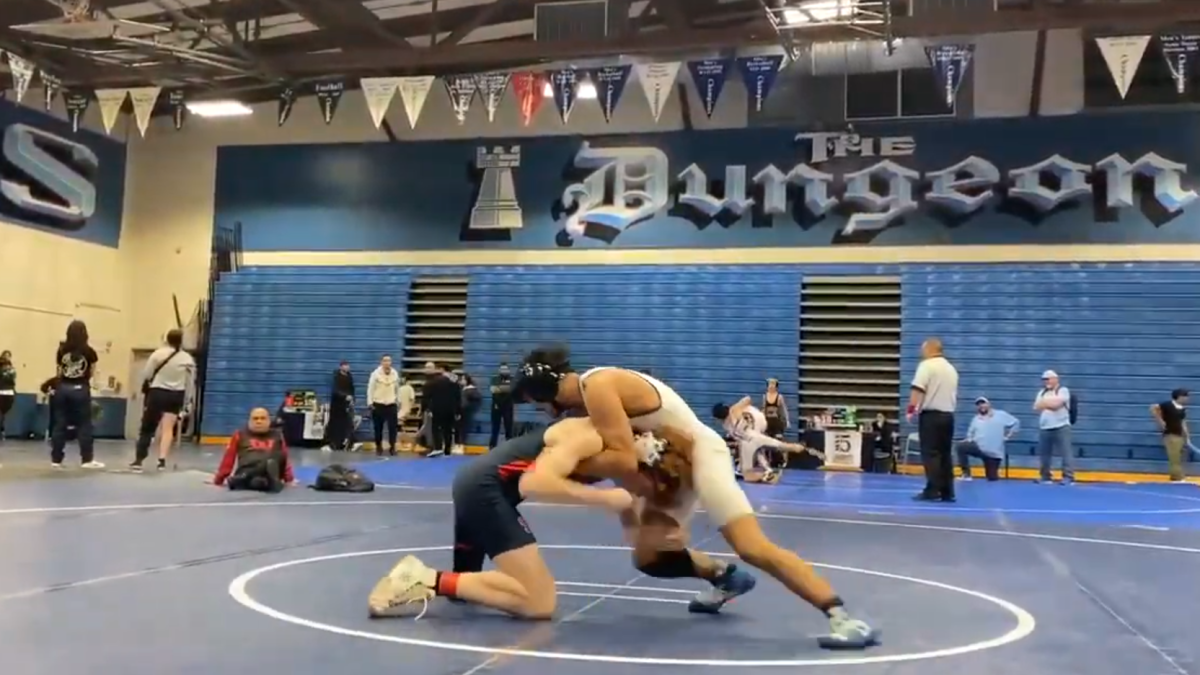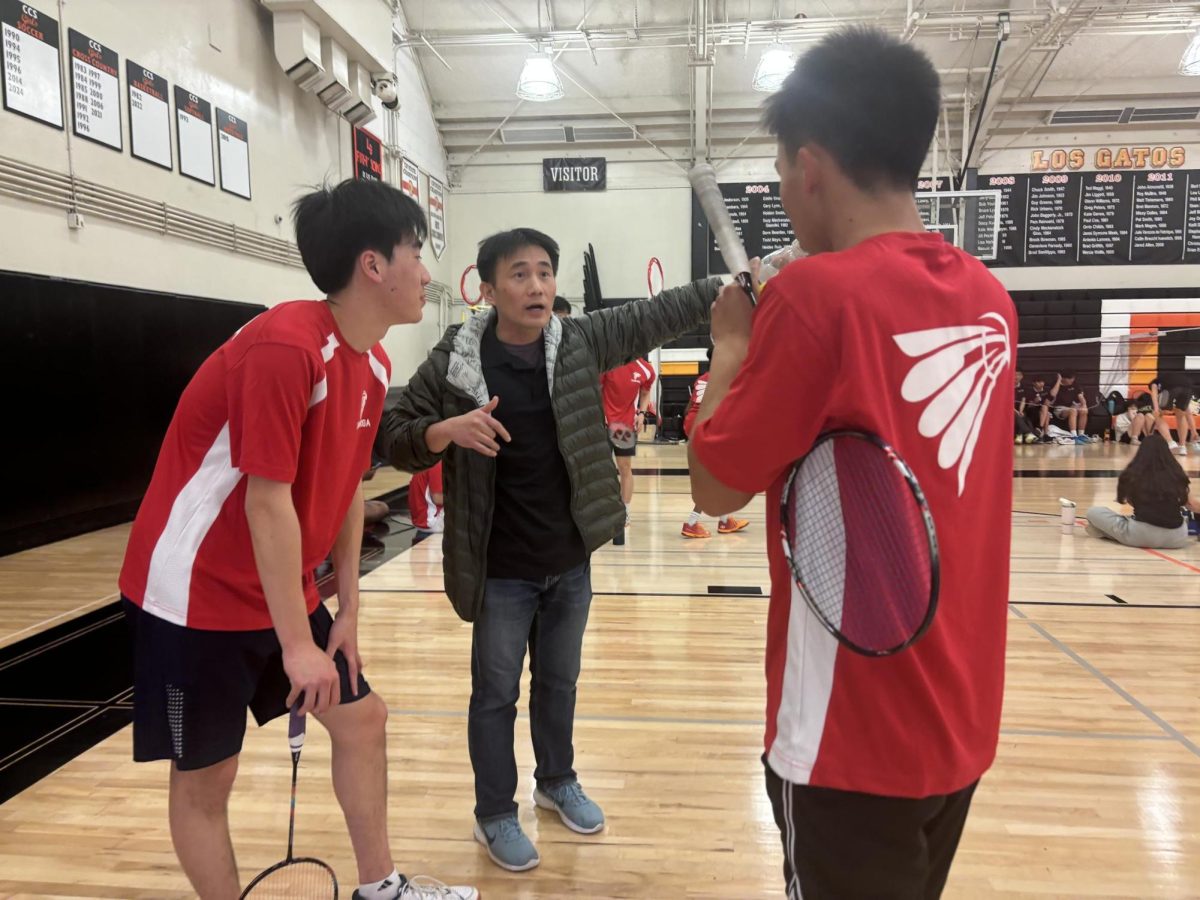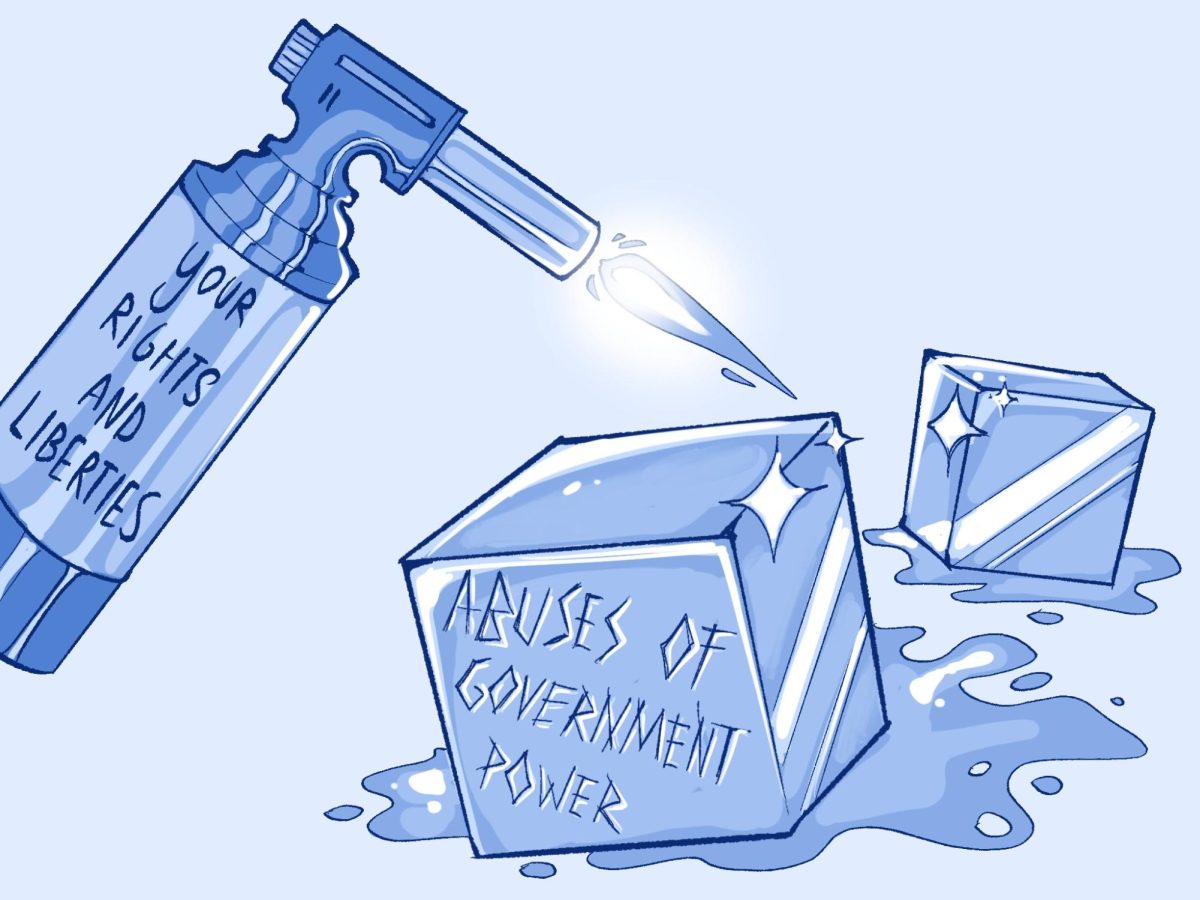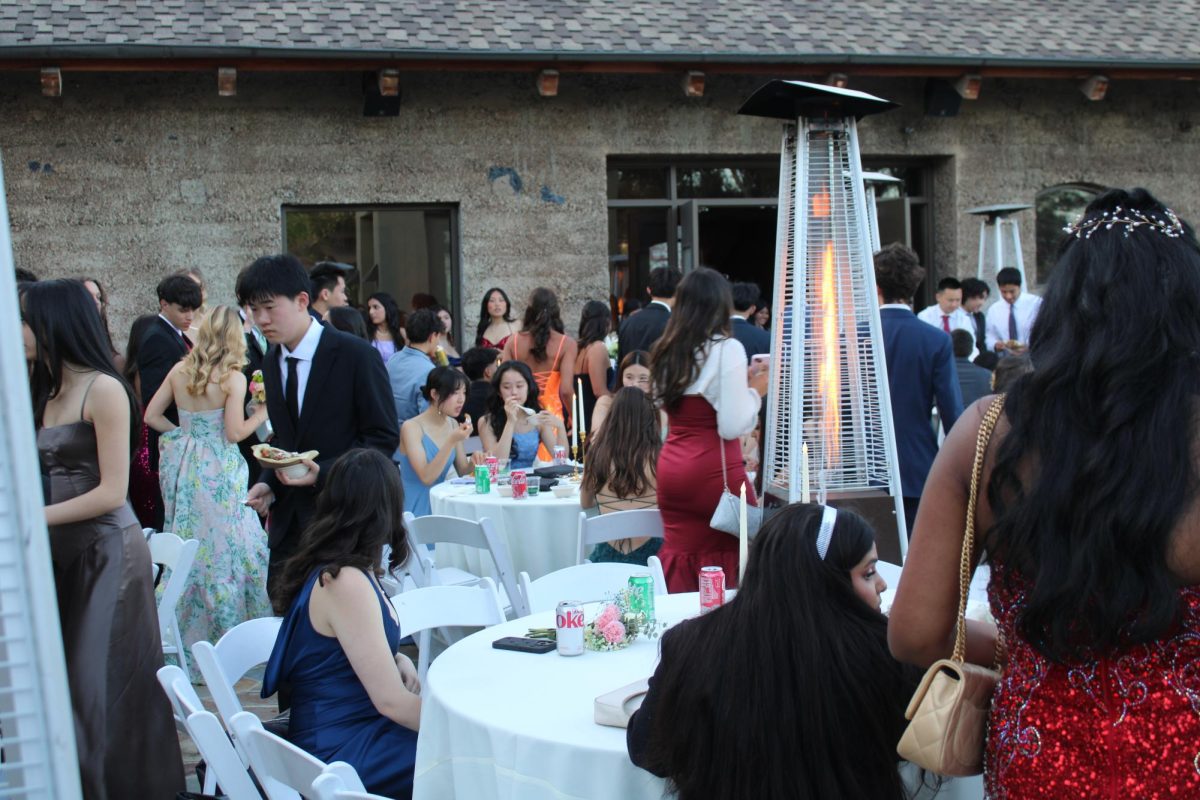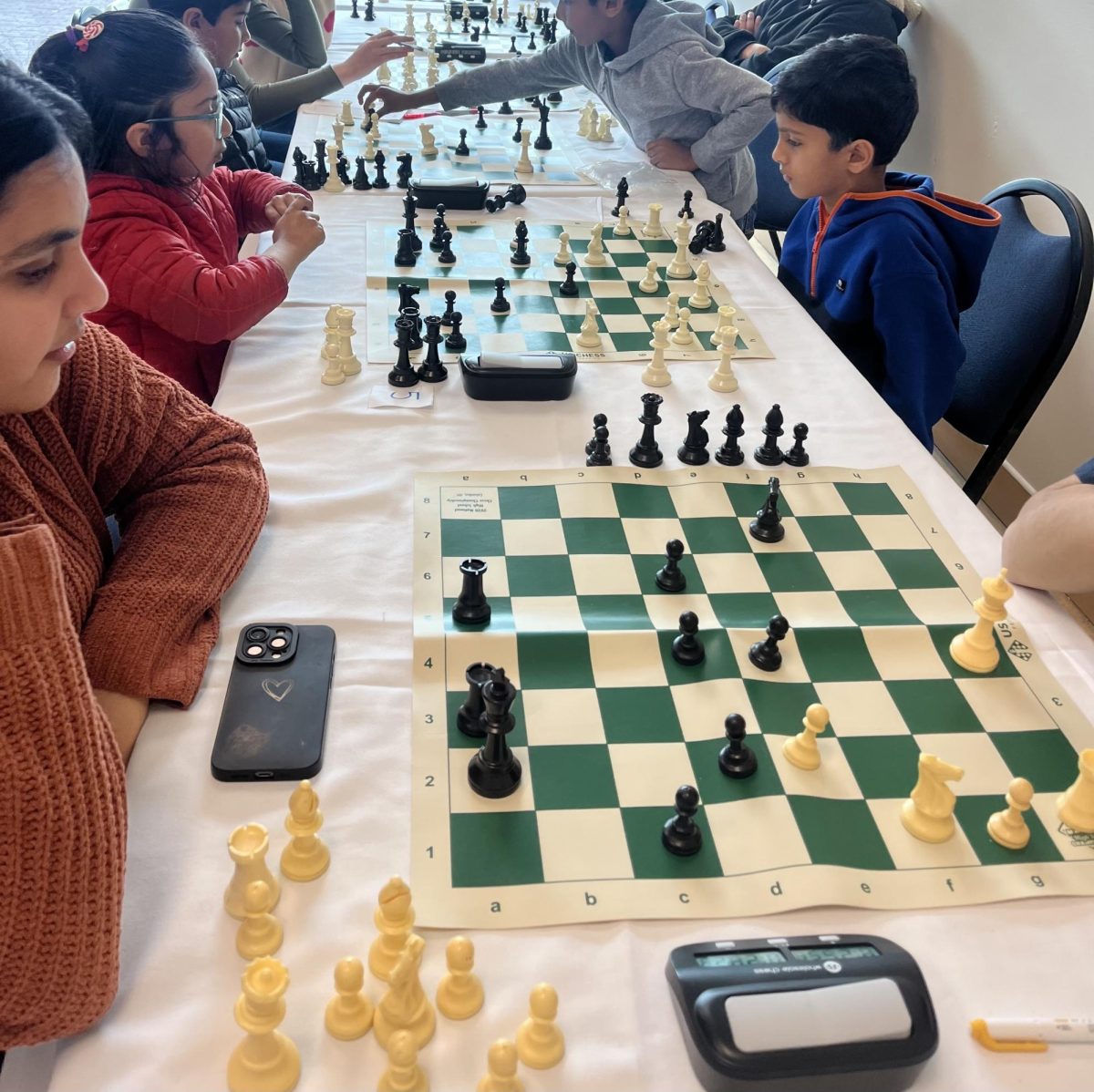Last weekend, Saratoga High’s VEX robotics team 95071X Extremity placed second out of 150 teams from across the world at the CREATE U.S. Open National Championship — a prestigious robotics tournament hosted annually by the CREATE Foundation — held in Council Bluffs, Iowa from March 27-29. The team also won the coveted Robot Skills Champion award, a testament to the team’s hardware and software prowess.
Team 95071X consists of freshman Daniel Yeh; sophomore Krishna Muddu; juniors Alec Guan, Richard Lee, Adit Sharma and Bryan Zhao and seniors Alex Yaung and Luke Zhang. They qualified for the U.S. Open on Oct. 13 at the Saratoga Qualifier by winning the Design Award.
The team competes in the VEX Robotics Competition, where teams of 5-10 members apply engineering skills to build robots revolving around a unique game objective every year. High performing teams qualify for the State Championship, U.S. Open Nationals and World Championship via awards and winning both local and larger Signature tournaments. Only teams from the hosting region are allowed to compete in local tournaments, while teams from any region can compete in Signature events.
This year’s game, “High Stakes,” revolves around scoring rings onto five mobile goals and two wall stakes on the field. Teams may drop off goals in the corners of the field, which grant either a positive or negative score multiplier. Top rings are worth extra points. In each match, a 15-second autonomous period is followed by a 1 minute and 45 second driver-controlled period.
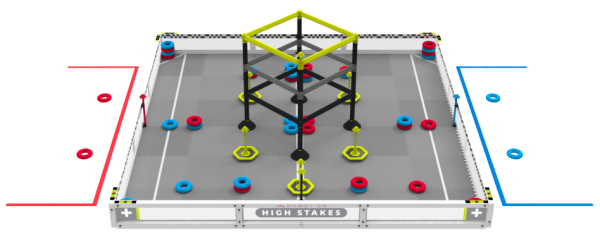
Courtesy of REC Foundation
Field layout for this year’s game, “High Stakes.”
During competitions, two-team alliances compete against each other. Typically, tournaments consist of five to 10 qualification matches of randomized alliances that determine rankings based on a team’s performance, followed by an alliance selection period and elimination matches.
During the first day of the U.S. Open, teams competed individually in the Skills Challenge, where they had six attempts to score as many points as possible in both driver-controlled and preprogrammed runs in one minute.
According to Lee, 95071X’s driver, the competition fields were slightly different from the fields at the school. Thus, although the team had fine tuned their robust autonomous paths, their robot initially performed poorly while running at the competition.
“At our home field, we run on fields with plastic walls, which flex a lot less than the metal competition fields at Nationals. That caused us a lot of issues because our robot would sometimes get stuck in the middle of its path,” Lee said.
To make matters worse, the team automated part of their driver-controlled runs to depend on a macro — a sequence of actions performed at the press of a single button — so neither the preprogrammed runs nor driver-controlled runs were consistent.
Going into their last attempt for the Programming Skills Challenge, the team had a combined high score of 104, six points behind the team in first place. To ensure that their last attempt would run properly, the team spent hours tuning on the metal practice fields at the venue.
Fortunately, the robot only missed a single ring on the final attempt, scoring 60 points in the programming category and helping them reach their season high of 54 driver and 60 programming points, for a total of 114 points. This score won the team the Robot Skills Champion award.
“Going into the run, I was expecting another complete whiff. The robot even got stuck for a second, but our relocalization program helped it get back on the intended path. A score of 60 [points] in programming places us at top five in the world, which is very exciting,” Lee said.
During the second day, the team initially ranked first in their division after five qualification matches. However, while waiting on the queuing table, a controller malfunction caused the robot to drive itself off the table.
“That fall was disastrous, as the entire drivetrain bent into a U-shape. That caused all of our autonomous programs to miss, and our bot was incredibly difficult to drive,” Lee said.
After persevering through the match immediately following the catastrophic drop, the team scrambled to make temporary repairs to straighten the bent parts.
They had to source replacement parts from the competition, but many teams were reluctant to help.
“Team 7686A Islanders ended up giving us an aluminum part that we crucially needed. It was a really nice gesture on their part as they had no obligation to do so,” Lee said. “Even though everyone is trying to get an upper hand, some teams still go out of their way to help others, which is something we are very grateful for.”
During the lunch break, 95071X replaced the majority of the bent metal and re-tuned their robot tracking system. Although the team’s ranking dropped due to the fall, the team was able to climb back to third seed by the last day of the tournament.
During alliance selection, team 95071X was picked by first seed team 1000A Foothill Robotics, another NorCal team. Both teams had very strong autonomous programs, giving them large point leads going into the driver-controlled portion of each match.
Team 95071X’s innovative “goal rush” mechanism also allowed the team to grab onto the fifth mobile goal immediately after the start of each match, putting them in a position of control from the beginning. Since there is an odd number of goals, the alliance that obtains control of the fifth mobile goal often has a competitive advantage.

Photo by Alec Guan
This pneumatic piston-actuated mechanism allows 95071X’s robot to quickly latch onto mobile goals during matchplay
“For the most part, our division wasn’t too difficult, especially because of our high seeding. In most of our matches, we won by a pretty comfortable margin and were almost always in a winning position,” Lee said.
However, in the tournament semifinals, 1000A and 95071X, the Red division champions, played against the Blue division champions — a difficult matchup that 1000A and 95071X only won by two points. Although they were winning for most of the match, near the end of the match, one of the opposing teams dragged a full goal of rings into the negative corner, nearly turning around the match.
During the grand finals, which followed a best-of-three format, team 95071X initially held a lead of 1-0. However, a slight misplay ensued during the last 30 seconds of the second match.
“Due to a strategic blunder, we didn’t expect to lose the negative corner so late into the game,” Lee said. “That play lost us a 32 point swing, and if it didn’t happen, we would have won the entire tournament.”
Devastatingly, the team lost the final tiebreaker match due to a questionable call from the event’s referees.
“The refs called us for a rule violation that wasn’t valid in my opinion, which ended up costing us the match. However, the ref’s decision is final, and we respected that. It’s just an unfortunate way to end such a great run,” Lee said.
Despite the team’s disappointment at going out in such a fashion, the team still feels they performed well overall.
“Especially considering that we basically broke the entire robot, I’m pretty happy about how well we performed at Nationals, and it was really nice to get so far with friends from our own region. Now, we need to focus on our robot redesign for Worlds and make it as consistent as possible,” Lee said.


